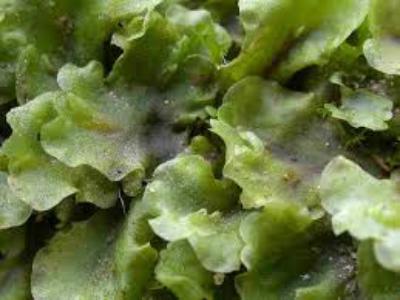Apopellia endiviifolia
(Apopellia endiviifolia)

Description
Pellia endiviifolia is a kind of liver to thallus , the family of Pelliaceae . Compared with other closely related species requiring moisture but tolerating some dehydration, this species is considered " aquatic " because it does not tolerate dehydration , but can be found in tuffs or travertines in formation if the water film is permanent . This species is present in Eurasia and was known in western North America, and has not been "discovered" (reported for1 st time) recently in Quebec (introduced?) . It is known to produce poison for fish (which could be a defense against herbivorous species ) A first criterion of identification is the small dichotomous branches present at the end of the thalli. They are so numerous that they can sometimes be confusing with a Riccardia . It has often been written that these ramifications appear especially in the fall, but the recently discovered populations in Quebec had abundant ramifications early or midsummer . Male specimens have thalli that are narrower and often dorsally colored along the rib . Antheridial chambers are distinctly brown to reddish; they strongly contrast with the surface of the thallus . Sterile specimens sometimes have stronger branching on their distal part, although dichotomies are sometimes not isolated and are small. The shape of these plants then evokes small fans . It is a species whose thalli are always submerged or wet by a film of water or splashing. Their rhizoids are more or less dark (this is one of the identification criteria) and their cell walls are not particularly thin (another criterion) . At the end of the thallus, the mucigenic papillae are carried by a hair formed of (1-) 2-8 cells
Taxonomic tree:







